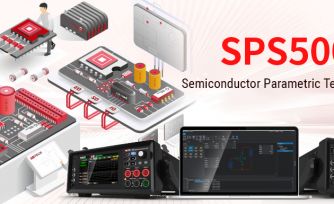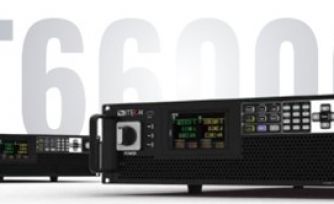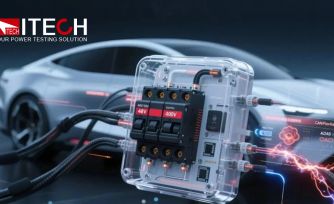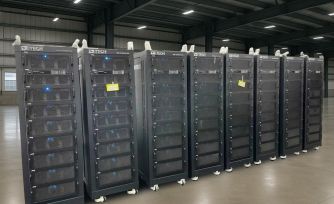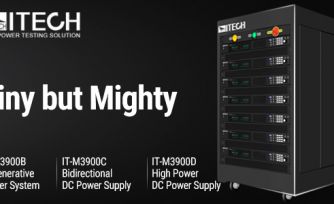Application of the IT6600C Dual-Channel DC Source/Load in Back-to-Back Converter
In modern industrial testing, energy recovery, and power electronics, Back-to-Back Motor technology has become an important approach for efficient testing and energy-saving applications. Compared to traditional mechanical load testing methods, back-to-back motor systems enable more precise and energy-efficient testing and control through closed-loop energy flow between a motor and a generator. This technology is widely used in motor testing, inverter validation, electric vehicle (EV) powertrain evaluation, renewable energy applications, as well as in high-end manufacturing industries such as aerospace.
A typical back-to-back motor system consists of two motors—either identical or of different specifications—connected via a common shaft or coupling to form a closed energy loop. The basic working principle of the system is as follows:
1. Drive Motor (Motor 1): Powered by an external source (such as an inverter or DC power supply), it converts electrical energy into mechanical energy to drive the coupling or the load.
2. Load Motor (Motor 2): Operates as a generator, receiving mechanical energy from the drive motor and converting it back into electrical energy. The generated power can be fed back to the drive motor, external loads, or the grid, forming an energy loop that significantly reduces overall power consumption.
3. Closed-Loop Control: Modern back-to-back motor systems are typically equipped with high-precision controllers (such as PLCs, DSPs, or FPGAs) to regulate motor speed, torque, and load characteristics for dynamic testing. The integration of inverters with energy recovery units enables bidirectional power flow, thereby enhancing the overall efficiency of the system.
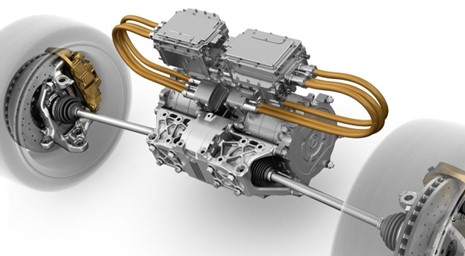
Schematic diagram of back-to-back motors in electric vehicles
Back-to-back motor technology has become a key solution in motor testing, energy recovery, and power electronics. It not only improves testing accuracy and optimizes motor system performance but also plays a crucial role in energy conservation, intelligent manufacturing, and new energy applications. As technology continues to advance, back-to-back motor systems are expected to be adopted across more industries, driving the global development of motor testing and control technologies.
A motor manufacturer, during the R&D and testing of back-to-back motors for electric vehicles, needed to control the input voltage of the motor system while also requiring external equipment to absorb the reverse current generated by the back-to-back motor setup. The entire system operates in a dynamic equilibrium, with current direction varying based on the vehicle’s driving state. This places high demands on the external test equipment—it must function as both a constant voltage and constant current source simultaneously, feature rapid voltage rise times, be easy to operate, and compact enough for laboratory environments.
This led them to adopt ITECH’s next-generation graphical bidirectional programmable DC power supply—the IT6600C. Featuring a new touchscreen design and an intuitive graphical interface, the IT6600C enables users to quickly and easily configure parameters and edit waveforms, significantly improving operational efficiency. As a new benchmark in high-power-density power supplies, the IT6600C series adopts advanced third-generation SiC (Silicon Carbide) technology. Within a compact 3U chassis, it delivers high power density with dual 21 kW channels. The two independent channels can be connected in series or parallel, providing up to 42 kW output from a single unit—covering the output range of three to five conventional units—and meeting the demands of high-voltage and high-current applications.
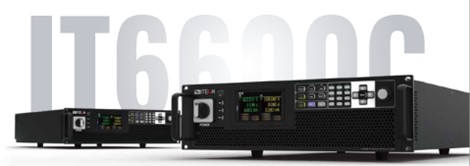
During testing, Channel 1 of the IT6600C operates in Constant Voltage (CV) mode, providing a stable voltage output to the system with a voltage rise time of ≤1 ms. When the current direction becomes negative, it absorbs the return current from the system. Channel 2 functions as a Constant Current (CC) source, controlling the current in the circuit. A List program is used to simulate various current direction scenarios during vehicle operation—for example, energy regeneration during downhill driving.
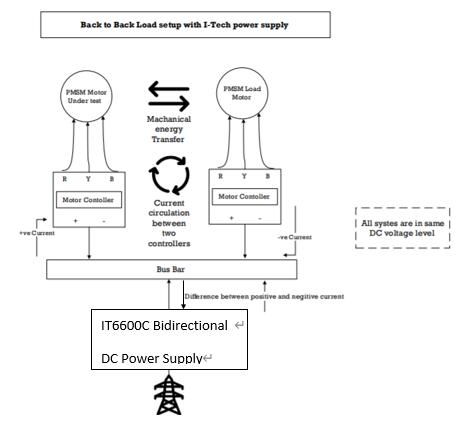
Back-to-back motor and IT6600 test schematic
The user was highly satisfied with the performance of ITECH's new IT6600C during testing. Its high power density, energy recovery capability, and integrated dual-channel operation immediately won over the R&D team. Beyond the scenarios described above, the IT6600C’s powerful waveform editing features and 1 ms voltage rise time allow it to simulate a wide range of regulatory waveforms. It comes preloaded with partial automotive power supply voltage curves from 9 industry standards, including LV123, LV148, and ISO21498-2, as well as compliance waveforms for IEC 61000-4-17 and IEC 61000-4-29, making it suitable for broader power disturbance and immunity testing.
The IT6600C high-power bidirectional DC power supply also supports battery testing, battery simulation, PV simulation, fuel cell testing and simulation, and more. With dedicated testing software, it greatly simplifies workflows for engineers and testing professionals.
For more information, visit the ITECH official website: https://www.itechate.com.

